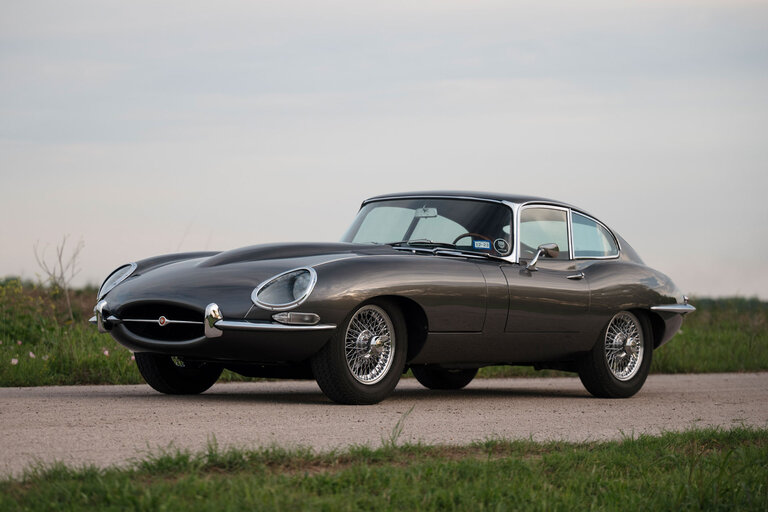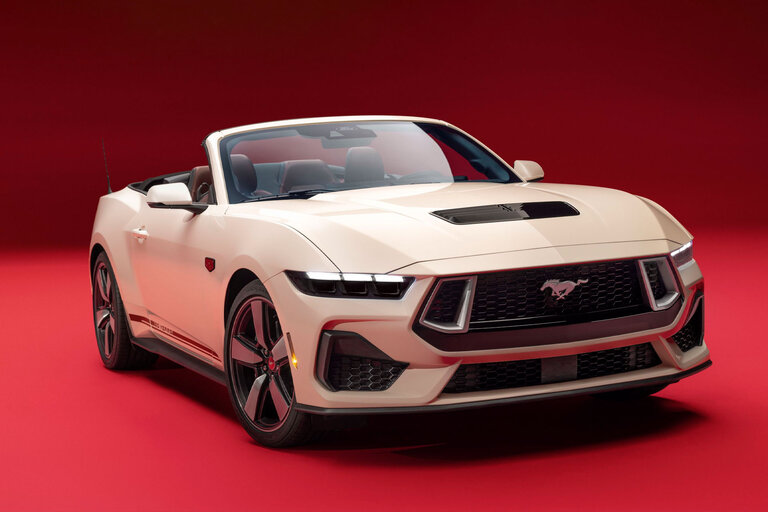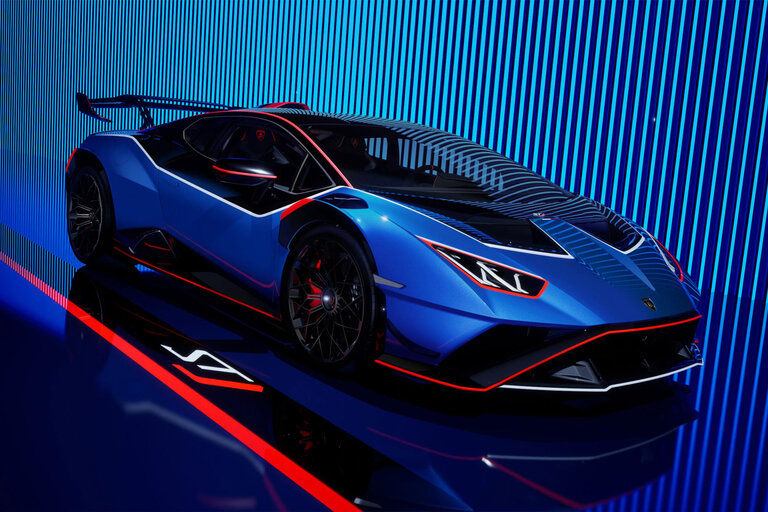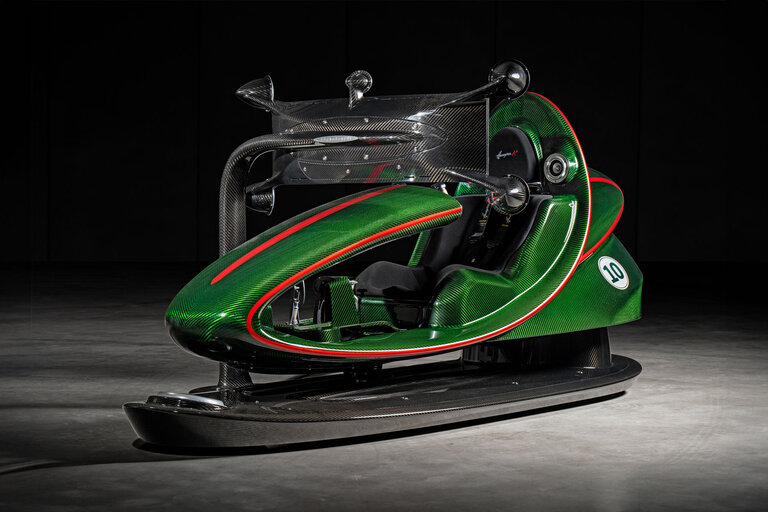
From the January 2009 issue of Car and Driver.
Amidst all the doom and gloom facing the automobile industry, right now is ironically an opportune time for car enthusiasts. Power, performance, and features continue to improve, while stiff competition and a bearish market are keeping prices relatively low. How low? Take the new Chevy Cobalt SS, kitted up with a new 260-horsepower turbo engine. Its base price of $24,095 works out to $93 per horsepower. By comparison, a Corvette works out to $115 per horsepower. The Cobalt SS has the same dollar-to-power ratio as the Mustang GT. There are better horsepower bargains around, but their numbers are few.
Plus, for right around $25,000—with two exceptions—this group of seven hopped-up economy cars offers more than just simple speed. All the cars in this group come with four- or five-passenger versatility and at least some degree of four-cylinder fuel frugality inherited from their economy-car roots. The point is you can get a whole lot of car without having to pay a whole lot of money.
We drove this fresh crop of sports cars south to Kentucky, where gas prices were not as high as Michigan’s (thanks, global economic crisis!), dogs are more common sights on the roads than other cars, and you can get whatever you want at a restaurant as long as it’s deep-fried. The cars proved adept at avoiding the canines, but our staffers suffered several head-on collisions with fried pickles.
Seventh Place: Mitsubishi Lancer Ralliart
Whoops. Just as Mitsubishi launches the Ralliart this year to go head to head with the Subaru WRX, Subie goes and adds 41 horsepower, leaving the Mitsu in a 28-hp hole. Plus, the Lancer is heaviest, by almost 300 pounds over the second-porkiest WRX. All-wheel drive helps the Ralliart achieve the second-best 0-to-60 time of 5.4 seconds, but by the 100-mph mark, the power-to-weight disadvantage relegates the Ralliart to fifth place.
The weight was a drawback elsewhere: Braking was second worst, and skidpad grip and fuel economy were poorest of the pack. On back roads, the Yokohama Advan A10 tires squealed like a stuck bunny, compromising an otherwise well-balanced chassis. Despite these handicaps, the Ralliart drew praise for its ride and handling: both supple on the highway and perfectly composed on two lanes.
HIGHS: Sweet gearbox, sweet seats, plenty of legroom in back.
LOWS: Too much road-hugging weight overwhelms the tires, outgunned in its class, expensive.
We’re also fans of the Ralliart’s twin-clutch automated manual transmission, nearly identical to the one found in the Evolution MR. Ditto the paddle shifters mounted to the steering column, which are large, made of metal, and easy to find when you need them. Two other shared Evo parts, the steering wheel and especially the Recaro seats, are as comfortable as anything on the market. The only bummer hand-me-down feature is the infernal rear wing, which blocks the rearward view.
Like the Cobalt, the Ralliart suffers from the car on which it’s based. Although it got top marks for rear-seat comfort—legroom is limo-like compared with the Mini—the cheap plastic from the base Lancer comes without upgrade in the interior. For $27,165, the second-highest base price of the group, we were hoping for a little more of everything. Plus, the seats are part of a $2750 package that pushes the sticker to a hair under 30 large. Every other car save the Mini rang up near the $25,000 mark. Against this group, the Ralliart is a little short on performance, and plenty short of being a bargain.
THE VERDICT: Tries to be a junior Evo, but the sticker price is closer than the performance.
2009 Mitsubishi Lancer Ralliart
237-hp turbo inline-4, 6-speed automated manual, 3500 lb
Base/as-tested price: $27,165/$29,915
C/D TEST RESULTS
60 mph: 5.4 sec
100 mph: 16.0 sec
1/4 mile: 14.2 @ 95 mph
Braking, 70–0 mph: 177 ft
Roadholding, 300-ft-dia skidpad: 0.82 g
C/D observed fuel economy: 18 mpg
Sixth Place: Mini JCW Clubman
Mini has always preached a less-is-more mantra. With the John Cooper Works Clubman, you get less—it’s the smallest and lightest of the cars here—for the most money. The $31,450 base, highest in the group, is more than the starting price for a BMW 128i. For $7100 above the sticker of a Clubman S, the John Cooper Works package adds 36 horsepower to the turbocharged engine, bigger brakes, 17-inch wheels with high-performance tires, and a stiffer, lowered suspension. The extra grunt lops six-tenths of a second off the car’s 0-to-60-mph time and seven-tenths from the quarter-mile run. Chassis performance is where this car shines, earning a silver medal on the skidpad (0.90 g) and coming to a Porsche-level braking stop of 153 feet from 70 mph.
The numbers confirmed our driving impressions. Lengthening the wheelbase has reduced the squirrelly handling tendencies of the Mini Cooper while not eliminating the lively, chuckable nature of the car, and there’s plenty of power for exhilarating corner exits. The steering is well weighted and full of feedback, although torque steer is ever present in lower gears. And despite a slightly heavy clutch, the pedals are placed perfectly for heel-and-toe downshifts, and the shifter moves through the gearbox’s short throws with a reassuring tightness. Its fuel-economy figures led the group, both in EPA ratings and in our as-tested results.
HIGHS: Cheeky styling, roller-coaster handling, snap, crackle, and pop engine noises.
LOWS: You-gotta-be-kidding-me price, rage-inducing radio controls, cavelike rear-seat access.
Other facets of the Mini don’t live up to the nimble handling. The seats (cloth, at this price) lack support, and the view out the back is partly obscured by the French doors. The rear area seats two, and only two, in relative comfort, but not before both must insert themselves awkwardly through the half-door on the passenger side. And the radio, despite our increasing familiarity with it, continues to confound us, in both function and the odd logic behind the placement of its knobs. Unlike the charming exterior styling, the Mini’s interior looks as if it is trying too hard to be different.
In this gang, the Clubman’s thrills come at too high a price. If you’re still in love with the Mini generally, the Clubman S is a better deal by a wide margin in the fun-to-dollar department.
THE VERDICT: All the Mini charm is seriously handicapped by a BMW-sized sticker price.
2009 Mini John Cooper Works Clubman
208-hp turbo inline-4, 6-speed manual, 2778 lb
Base/as-tested price: $31,450/$33,050
C/D TEST RESULTS
60 mph: 6.2 sec
100 mph: 15.0 sec
1/4 mile: 14.6 @ 98 mph
Braking, 70–0 mph: 153 ft
Roadholding, 300-ft-dia skidpad: 0.90 g
C/D observed fuel economy: 24 mpg
Fifth Place: Honda Civic Si
The years have not been kind to the Civic Si. When the latest hot version of the Civic coupe debuted in 2006 (the sedan followed a year later), 197 horsepower was top-shelf stuff in the segment, and the rev-happy engine made working the gearbox a joyful exercise. But today, despite being the second lightest in this contest, the Civic has the poorest power-to-weight ratio and is consequently slowest in a straight line. Braking, skidpad, and lane-change performance all wound up near the bottom, no thanks to its all-season tires.
Where the Civic shines is in value. With the lowest as-tested price of $24,675, the Si comes loaded with a sunroof, navigation system, satellite radio, and an iPod-friendly USB input. And the interior design, even with the love-it-or-hate-it split instrument cluster, still works well. Thoughtful, well-placed storage cubbies are everywhere.
HIGHS: Gearshift from heaven, plenty of value for the money.
LOWS: Where’s the torque? Steering keeps secrets from the driver.
Not so cool is the cab-forward spaceship styling that gives birth to a giant A-pillar right in the driver’s line of sight when going around corners. The tiny front sail windows offer some help, but cornering grace is further diminished by a shortage of steering feel. Our test panel split on its opinion of the powertrain. Some found satisfaction in rowing the gears; others found the lawn mower–like torque and the consequent need to keep the revs high something of a chore. That steering drew unanimous scorn—again. In the past, unkind words such as “video game” have been uttered in anger to describe the Si’s steering, but in all honesty, the most modern of those games’ wheels probably work better.
Chassis fundamentals in the Civic, however, are still strong. Highway ride was deemed by a few to be the best of this bunch, and the Si corners flat and remains stable under heavy braking.
The steering shortcomings put a serious damper on the fun meter, and they sap driver confidence. Combined with the lack of power, the Civic struggles to keep up with the pack. In this group, turbo power is a necessity to stay competitive.
THE VERDICT: Without a turbo, it’s a minor actor in this intense cast.
2009 Honda Civic Si
197-hp inline-4, 6-speed manual, 2947 lb
Base/as-tested price: $22,675/$24,675
C/D TEST RESULTS
60 mph: 6.7 sec
100 mph: 17.0 sec
1/4 mile: 15.1 @ 94 mph
Braking, 70–0 mph: 178 ft
Roadholding, 300-ft-dia skidpad: 0.87 g
C/D observed fuel economy: 24 mpg
Fourth Place: Subaru Impreza WRX
Whoops again. Whereas Mitsubishi erred in not making the Ralliart close enough to the Evolution, Subaru’s improvements to the WRX have made its STI model nearly obsolete. For only a few hundred dollars more than the 2008 model, the 2009 WRX gets a bigger turbo and a new exhaust. Power is up 41 horses to 265, and there’s an extra 18 pound-feet of torque.
Combine that with a clutch-abusing redline launch and the WRX will get to 60 mph in 4.7 seconds, 1.1 seconds quicker than previously and three-tenths swifter than the quickest STI we tested. What’s more, the WRX puts down its power more smoothly than the peaky STI, with ample grunt from 3000 rpm. The engine’s flexibility allowed us to leave the five-speed gearbox in third through most of the handling portion of this test.
HIGHS: Amazing acceleration, minimal turbo lag, smooth ride, high refinrment factor.
LOWS: Smooth ride a little too soft in the corners, vague steering.
The Subaru’s suspension has been sportified, too. Front and rear springs are 43 and 42 percent stiffer and larger-diameter anti-roll bars are in place. That makes us wonder how soft the old WRX was, since this one has the softest ride in this comparo. The suspension works well to absorb unpleasant highway bumps and gives an impression of high refinement. But the WRX has a little too much body roll while cornering, the steering and brakes are a shade too inert, and the shifter is too rubbery—factors that sap the thrills, although not nearly as much as with the Civic.
We were left wishing the rest of the WRX were as hard core as its updated engine. But then, if you want hard core, you can buy an STI for a lot more money. Given the choice, we’ll take the compromise and keep the extra cash.
THE VERDICT: Quicker than an STI, and it’s $10K less. That’s what we call a bargain.
2009 Subaru Impreza WRX
265-hp turbo flat-4, 5-speed manual, 3204 lb
Base/as-tested price: $25,660/$25,660
C/D TEST RESULTS
60 mph: 4.7 sec
100 mph: 12.9 sec
1/4 mile: 13.5 @ 102 mph
Braking, 70–0 mph: 160 ft
Roadholding, 300-ft-dia skidpad: 0.87 g
C/D observed fuel economy: 20 mpg
Third Place: Chevrolet Cobalt SS
A Cobalt SS finished fourth in a five-car comparison in 2005, our last comparo date with that Chevy. Back then, the Dodge SRT4 was based on a Neon, Acura still made the RSX Type-S, and the Cobalt’s supercharged four had a competitive 205 horsepower.
This, however, is a whole new Cobalt SS, and it costs just a few grand more than the old version. We got a taste during our Lightning Lap [“Chain Lightning,” November 2008], when a new 260-hp, direct-injection turbo four explained the Cobalt’s best-in-class lap time. “Must have been a ringer,” whispered office nonbelievers. Guess again: This Cobalt is the real deal. Testimony is provided by its acceleration times, which are only a tick behind the higher-torque Mazdaspeed 3. The 5.5-second 0-to-60-mph time might have been better, but the tires struggle to put down the engine’s power. Had we used the no-lift shift feature built into the Cobalt SS, it would have been quicker than the Mazda through the quarter-mile, but our test procedure requires using the clutch pedal and lifting off the throttle to shift.
HIGHS: Everything associated with moving—engine, brakes, chassis—is superb.
LOWS: Everything else is still a Cobalt, which means styling blahs and plastics as paltry as they come.
Check out the chassis numbers as well: first place in skidpad (an impressive 0.92 g) and second place through the lane change. Whoever was in charge of setting up the Cobalt—we suspect GM’s performance pooh-bah John Heinricy had some input—got it dialed in perfectly. The Cobalt is fun to drive, but it’s also amazingly well composed, and not just for a Cobalt. The steering, brakes, transmission, and suspension are all contenders in this class.
Unfortunately, the Cobalt SS is still, at its roots, a Cobalt. The sedan comes without a wing, thankfully, but otherwise there’s little dress-up from the base car except for some pretty five-spoke wheels and Recaro seats. The interior is well laid out but it’s bland, and the plastics are a testament to GM’s (hopefully) bygone lowest-bidder strategy, and they’re woefully cheap-looking. But considering how much ground Chevy has gained in such a short time with this car, we’re eagerly awaiting the next iteration.
THE VERDICT: A rocket disguised as a rental.
2009 Chevrolet Cobalt SS
260-hp turbo inline-4, 5-speed manual, 3001 lb
Base/as-tested price: $24,095/$25,060
C/D TEST RESULTS
60 mph: 5.5 sec
100 mph: 13.3 sec
1/4 mile: 14.2 @ 102 mph
Braking, 70–0 mph: 163 ft
Roadholding, 300-ft-dia skidpad: 0.92 g
C/D observed fuel economy: 22 mpg
Second Place: Volkswagen GTI
Despite losing to the Mazdaspeed 3 in a May 2007 comparison test, we decided to bring back the 10Best-winning GTI for another go. This time we equipped it with the dual-clutch automated manual and kept the frills to a minimum. With its second-place finish, the GTI did not disappoint.
Atop our list of praise for the Vee-Dub is the simple but stylish interior. Everyone loved the plaid trim and the supportive seats, and a steering wheel that adjusts for rake and reach helped the car earn top marks for driver comfort. The GTI is even comfortable for your feet, with a giant dead pedal to rest the left hoof. Refinement is up there, too, with the quietest interior at idle and 70-mph cruising.
HIGHS: German sophistication and refinements at a budget price, a willing and able chassis.
LOWS: Brakes give up too soon, a famous name is falling behind in the horsepower race.
The GTI’s performance on paper—average in the chassis department and below average in acceleration—feels better in person. Driver confidence in the GTI is high, even though the tires relinquish grip sooner than others in our competition. Complaints? Well, let’s start with the brakes, which have a long pedal travel that only gets longer as the driving heats up. The steering feel could be better. On most roads, the GTI is as buttoned-down as in every German-car stereotype you’ve heard, but some rough surfaces caused the car to bobble.
So, you ask, why did a 10Best winner come in second best? The 10Best award is about the overall feel of a car, and our jury found the smooth GTI to be more pleasing as an everyday proposition than the hairier Mazda. The GTI’s charm and ease of use make up for the deficit in performance. But the next GTI, already announced with only a modest horsepower increase, might not be able to keep up with the ever-quicker competition.
THE VERDICT: The sensible choice, but sensible rarely wins.
2009 Volkswagen GTI
200-hp turbo inline-4, 6-speed automated manual, 3168 lb
Base/as-tested price: $24,240/$25,539
C/D TEST RESULTS
60 mph: 6.1 sec
100 mph: 16.2 sec
1/4 mile: 14.7 @ 96 mph
Braking, 70–0 mph: 168 ft
Roadholding, 300-ft-dia skidpad: 0.88 g
C/D observed fuel economy: 21 mpg
First Place: Mazdaspeed 3 GT
The third time is indeed a charm for the Mazdaspeed 3, and with a new Mazda 3 on the way, it looks like this car will retire with an undefeated 3-0 comparo record. This latest win didn’t come easy. This is a strong group of cars, and each has its own appeal. Some test drivers in our group preferred the ride and handling of the Cobalt, others favored the GTI’s superior refinement, and so on throughout the field. But the Mazda, we all agreed, offers the best combination of speed, value, and sophistication.
The speed part comes courtesy of the 2.3-liter direct-injection turbo four-cylinder with its explosive power delivery and comparo-best 280 pound-feet of torque. Despite losing steam above 6000 rpm (Mazda says a smaller turbo designed for less lag and the high demands on the fuel-delivery system have trouble keeping up at high revs), the Mazdaspeed 3 pulls strongly enough from a stop to take second place in drag-strip runs. Actually, it pulls too strongly for some: Torque steer is present in the first two gears and on occasion even in third, a trait exacerbated by uneven road surfaces.
HIGHS: Lots of low-end grunt, tough exhaust note, big and comfortable cabin.
LOWS: Power dies at high rpm, wicked torque steer in the lower gears.
In terms of value, the Grand Touring model we tested is only $450 more than the least-expensive Civic, and includes xenon headlamps, LED taillights, rain-sensing wipers, Bose stereo, and Alcantara trim on the seats. If you can go without those luxuries, the Sport model is a mere $23,410. Either way, the Mazda also has the largest rear-seat and cargo volume, and we rated the front and rear comfort high.
As for sophistication, we point to the high-class cabin and the way the Mazda goes down the road. Everything feels solid, such as brakes that refuse to fade and steering (torque steer notwithstanding) that returns a weighted, linear response to the driver’s input. Complaints are few: The gear shift feels slightly ropy, and the radio controls still confuse us from time to time.
So, for now, the Mazdaspeed 3 is perched atop the pocket-rocket pile.
THE VERDICT: The current paragon of cheap speed.
2009 Mazdaspeed 3 Grand Touring
263-hp turbo inline-4, 6-speed manual, 3170 lb
Base/as-tested price: $25,125/$25,125
C/D TEST RESULTS
60 mph: 5.5 sec
100 mph: 13.2 sec
1/4 mile: 14.0 @ 103 mph
Braking, 70–0 mph: 159 ft
Roadholding, 300-ft-dia skidpad: 0.89 g
C/D observed fuel economy: 23 mpg
This content is created and maintained by a third party, and imported onto this page to help users provide their email addresses. You may be able to find more information about this and similar content at piano.io
Source link





